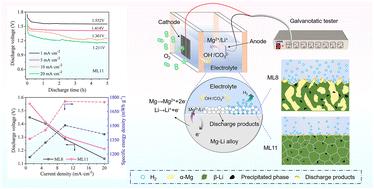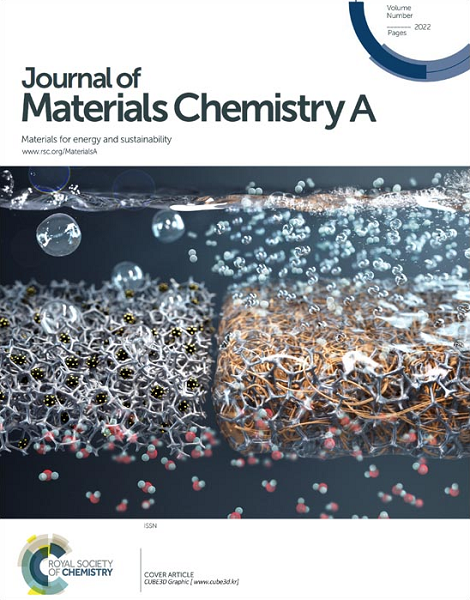The effect of lithium content on the discharge and electrochemical performance of Mg–Li–Zn–Y alloys for primary Mg–air batteries
IF 10.7
2区 材料科学
Q1 CHEMISTRY, PHYSICAL
引用次数: 0
Abstract
In this work, the microstructure, corrosion resistance, and discharge performance of two hot-extruded Mg alloys with different lithium contents were thoroughly investigated. The electrochemical performance of the Mg anode is closely related to its microstructure. The Mg–11Li–6Zn–2Y (ML11) alloy, primarily composed of a singular β-Li phase and smaller, fewer W phases, enables uniform discharge reactions in magnesium–air batteries (Mg–air batteries), thereby significantly suppressing the “chunk effect”. Moreover, the Li2CO3 film formed in the discharge products helps inhibit the hydrogen evolution side reaction. In contrast, the Mg–8Li–6Zn–2Y (ML8) alloy is mainly composed of α-Mg and β-Li phases, with larger and more numerous W phases, resulting in inferior discharge performance. Battery tests indicate that the ML11 anode has a discharge voltage of 1.211 V, an anode utilization rate of 62.6%, and a high specific energy density of 1727 mW h g−1 at a current density of 20 mA cm−2. This study provides a new perspective for the development of anode materials for Mg–air batteries.

求助全文
约1分钟内获得全文
求助全文
来源期刊

Journal of Materials Chemistry A
CHEMISTRY, PHYSICAL-ENERGY & FUELS
CiteScore
19.50
自引率
5.00%
发文量
1892
审稿时长
1.5 months
期刊介绍:
The Journal of Materials Chemistry A, B & C covers a wide range of high-quality studies in the field of materials chemistry, with each section focusing on specific applications of the materials studied. Journal of Materials Chemistry A emphasizes applications in energy and sustainability, including topics such as artificial photosynthesis, batteries, and fuel cells. Journal of Materials Chemistry B focuses on applications in biology and medicine, while Journal of Materials Chemistry C covers applications in optical, magnetic, and electronic devices. Example topic areas within the scope of Journal of Materials Chemistry A include catalysis, green/sustainable materials, sensors, and water treatment, among others.
 求助内容:
求助内容: 应助结果提醒方式:
应助结果提醒方式:


